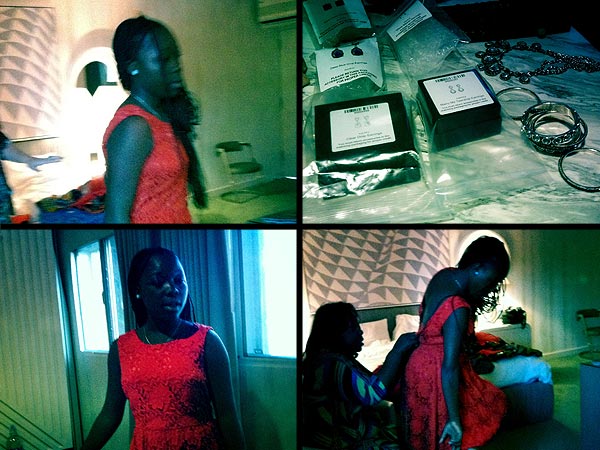ROME (Reuters) - A huge protest vote by Italians enraged by economic hardship and political corruption pushed the country towards deadlock after an election on Monday, with voting projections showing no coalition strong enough to form a government.
With more than two thirds of the vote counted, the projections suggested the center left could have a slim lead in the race for the lower house of parliament.
But no party or likely coalition appeared likely to be able to form a majority in the upper house or Senate, creating a deadlocked parliament - the opposite of the stable result that Italy desperately needs to tackle a deep recession, rising unemployment and a massive public debt.
Such an outcome has the potential to revive fears over the euro zone debt crisis, with prospects of a long period of uncertainty in the zone's third largest economy.
Italian financial markets took fright after rising earlier on hopes for a stable and strong center-left led government, probably backed by outgoing technocrat premier Mario Monti.
The projected result was a stunning success for Genoese comic Beppe Grillo, leader of the populist 5-Star Movement, who toured the country in his first national election campaign hurling obscenity-laced insults against a discredited political class.
With vague election promises and a team of almost totally unknown candidates, the shaggy haired comedian channeled pure public anger against what many see as a sclerotic and useless political system.
The likely result was also a humiliating slap in the face for colorless center-left leader Pier Luigi Bersani, who appeared to have thrown away a 10-point opinion poll lead less than two months ago against Silvio Berlusconi's center right.
Berlusconi, 76, who staged an extraordinary comeback from sex and corruption scandals since diving into the campaign in December, appeared to be leading in the Senate race, but Grillo's projected bloc of Senators would leave him well short of a majority.
Projections gave Bersani's center-left alliance a lead of less than one percentage point in the lower house. If confirmed, that would be enough to control the chamber because of election laws that guarantee a 54 percent majority to the party with the largest share of the vote.
In the Senate the picture was different. The latest projection from RAI state television showed Berlusconi's bloc winning 112 Senate seats, the center-left 105 and Grillo 64, with Monti languishing on only 20 after a failed campaign which never took off. The Senate majority is 158.
Berlusconi, a master politician and communicator, wooed voters with a blitz of television appearances and promises to refund a hated housing tax despite accusations from opponents that this was an impossible vote buying trick.
Grillo has attacked all sides in the campaign and ruled out a formal alliance with any group although it was not immediately known how he would react to his stunning success or how his supporters would behave in parliament.
DANGER OF NEW ELECTION
A bitter campaign, fought largely over economic issues, made some investors fear a return of the kind of debt crisis that took the euro zone close to disaster and brought the technocrat Monti to office, replacing Berlusconi, in 2011.
The projected results showed more than half of Italians had voted for the anti-euro platforms of Berlusconi and Grillo.
Officials from both center and left warned that the looming deadlock could make Italy ungovernable and force new elections.
A center-left government either alone or ruling with Monti had been seen by investors as the best guarantee of measures to combat a deep recession and stagnant growth in Italy, which is pivotal to stability in the currency union.
The benchmark spread between Italian 10-year bonds and their German equivalent widened from below 260 basis points to above 300 and the Italian share index lost all its previous gains after projections of the Senate result.
"These projections suggest that we are heading for an ungovernable situation", said Mario Secchi, a candidate for Monti's centrist movement.
Stefano Fassina, chief economic official for Bersani's center-left, said: "The scenario from the projections we have seen so far suggests there will be no stable government and we would need to return to the polls."
If the results are confirmed the only possibility looks like a "grand coalition" combining right and left, like the one Monti led for a year. But politicians said before the vote this could not work for long and would struggle to work decisively.
Monti helped save Italy from a debt crisis when Rome's borrowing costs were spiraling out of control, but few Italians now see him as the savior of the country, in its longest recession for 20 years.
Grillo's movement rode a huge wave of voter anger about both the pain of Monti's austerity program and a string of political and corporate scandals. It had particular appeal for a frustrated younger generation shut out of full-time jobs.
"I'm sick of the scandals and the stealing," said Paolo Gentile, a 49-year-old Rome lawyer who voted for 5-Star.
"We need some young, new people in parliament, not the old parties that are totally discredited."
Berlusconi, a billionaire media tycoon, exploited anger against Monti's austerity program, accusing him of being a puppet of German Chancellor Angela Merkel, but in many areas Grillo was a bigger beneficiary of public discontent.
Italy desperately needs a strong, reform-minded government to revive growth after two decades of stagnation and address problems ranging from record youth unemployment to a dysfunctional justice system and a bloated public sector.
Italians wrung their hands at prospects of an inconclusive result that will mean more delays to these reforms.
"It's a classic result. Typically Italian. It means the country is not united. It is an expression of a country that does not work. I knew this would happen," said 36-year-old Rome office worker Roberta Federica.
Another office worker, Elisabetta Carlotta, 46, shook her head in disbelief. "We can't go on like this," she said.
(Additional reporting by Stefano Bernabei, Steve Scherer, Gavin Jones, Naomi O'Leary and Giuseppe Fonte in Rome and Lisa Jucca in Milan; Writing by Barry Moody; Editing by Peter Graff)











